Airport Closest to Arches National Park
When embarking on an adventure to Arches National Park, the excitement begins long before you set foot on the trail. One of the first things to consider is the airport closest to Arches National Park. With its stunning red rock formations and breathtaking vistas, planning your arrival is crucial to kickstart your exploration.
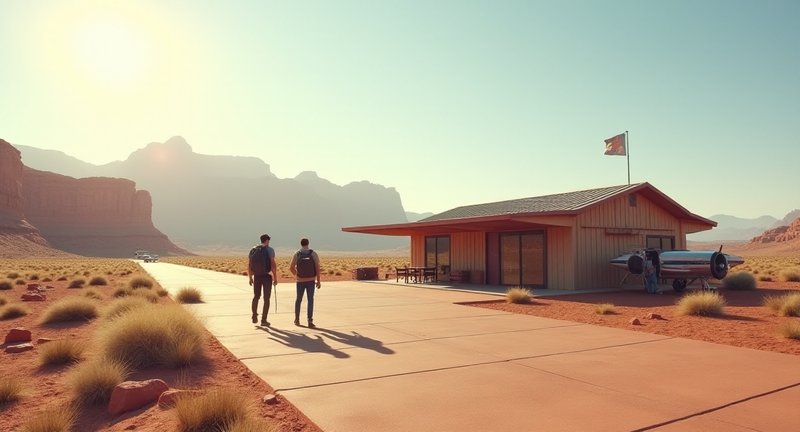
The nearest airport to Arches National Park is Canyonlands Field Airport (CNY), located just about 18 miles from the park entrance. I’ve landed there a few times, and it’s a small yet charming airport that sets a delightful tone for your journey. Here are some tips for making the most of your arrival:
-
Rental Cars: The airport has a limited selection of car rental services, so it’s wise to book in advance. A vehicle will give you the freedom to explore not just the park, but the surrounding landscapes as well.
-
Scenic Drive: The drive from the airport to Arches is nothing short of spectacular. As you meander through the rugged terrain, keep your camera ready; you might just spot wildlife or breathtaking views that are too beautiful to resist capturing.
-
Nearby Amenities: Although the airport is small, the nearby town of Moab offers ample accommodations, dining, and shopping options to stock up on supplies before venturing into the park.
-
Plan Your Timing: Arriving early in the day can allow you to hit the trails as soon as you check in to your accommodation, maximizing your time in the majestic wilderness.
Exploring Arches National Park is truly a journey of a lifetime, and your arrival at the Nearest airport to Arches National Park is the first step in creating unforgettable memories.
Discovering the Airport Closest to Arches National Park
When planning a pilgrimage to the stunning landscapes of Arches National Park, the first step is determining the most convenient entry point to this desert paradise. From my own experience, there’s nothing quite like the thrill of landing close to a natural wonder, ready to dive into the adventures that await. Here’s a guide to help you find that gateway:
Major Airports to Consider:
- Salt Lake City International Airport (SLC): Approximately a 4-hour drive away, this airport offers numerous flight options and car rental services. Plus, the scenic drive through Utah’s picturesque landscapes is an added bonus.
- Grand Junction Regional Airport (GJT): About 2.5 hours from the park, this smaller airport provides a more laid-back arrival experience. It’s also a good option if you prefer to avoid larger crowds.
- Canyonlands Field Airport (CNY): Just a short drive (around 30 minutes) from the park, this is the most direct option, albeit with limited flights. It’s perfect for those who prioritize convenience and speed.
Tips for Your Journey:
- Book Early: Airfare can fluctuate dramatically, so snagging your tickets early can save you some serious cash.
- Rental Cars: Check for availability in advance, especially during peak tourist seasons. Trust me, nothing feels worse than landing and realizing your wheels are gone.
- Enjoy the Drive: Whichever airport you choose, make sure to relish the journey. The routes are often adorned with breathtaking views that prepare you for the majesty of Arches.
In my travels, I’ve learned that the journey is just as important as the destination. So as you plan your trip, take a moment to breathe in the adventure that lies ahead!
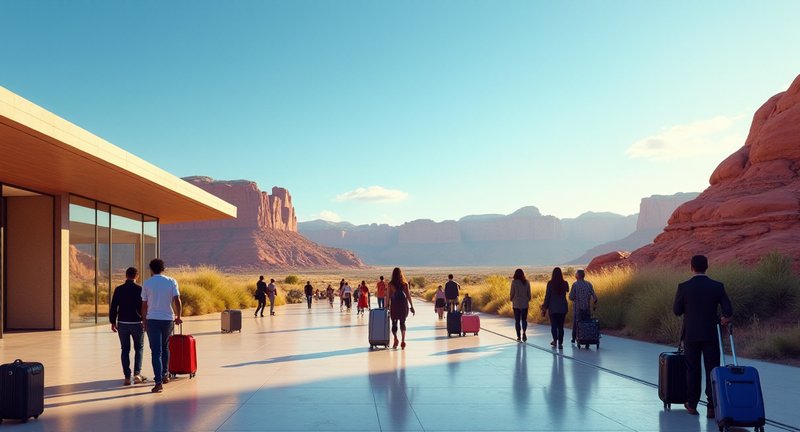
Introduction to Arches National Park
Arches National Park, a wonderland of red rock formations and gravity-defying arches, never fails to take my breath away. Nestled in the eastern reaches of Utah, this natural marvel invites adventurers to lose themselves in its whimsical landscapes. As I set foot in the park for the first time, I felt as though I had stumbled into a scene straight out of a surreal painting. Here’s why this destination should be on your travel radar:
-
Stunning Landscapes: From the iconic Delicate Arch to the labyrinth of rock fins and pinnacles, each vista tells a story sculpted by time. Sunrise and sunset cast an ethereal glow, painting the rocks in shades of orange and pink that are truly spellbinding.
-
Diverse Trails: Whether you’re a casual stroller or a seasoned hiker, the park offers trails for every ability. The trails vary from the short, family-friendly paths to the challenging routes that reward you with unparalleled views.
-
Wildlife Encounters: Keep your eyes peeled! The park is alive with wildlife, including mule deer, coyotes, and a vibrant array of birds. I once caught sight of a hawk soaring majestically overhead, a reminder of the wild beauty surrounding me.
-
Stargazing Bliss: When night falls, the park transforms into a celestial dome. The lack of light pollution allows you to gaze upon a blanket of stars that twinkle like diamonds scattered across a velvet sky. Bring a blanket and let the universe enchant you.
So, pack your bags and prepare for a journey that will invigorate your spirit and captivate your imagination. Arches National Park isn’t just a destination; it’s an experience that beckons every nature lover and adventure seeker.
Why Visit Arches National Park?
Why should you visit Arches National Park? Well, if you’ve ever dreamed of landscapes that make you feel like you’ve wandered into another world, this is the place. The park is home to over 2,000 natural stone arches, each one more mesmerizing than the last. Imagine walking through a red rock wonderland where gravity seems defied, and time feels frozen in those sweeping formations.
Let’s talk experiences. Whether you’re a seasoned hiker or someone who just enjoys a scenic drive, Arches caters to all. Here are some must-dos:
- Delicate Arch: This iconic beauty is a 3-mile round-trip hike. It’s worth every step for that once-in-a-lifetime view.
- Windows Section: Don’t feel like hiking? Drive right up and be greeted by massive arches that seem to frame the sky itself.
- Fiery Furnace: A guided tour through a maze of sandstone fins. You’ll feel like an adventurer exploring uncharted territory.
If you’re visiting for the first time, timing is everything. The park looks surreal at sunrise and sunset, with golden light painting the rocks in hues you didn’t even know existed. And trust me, seeing the stars in this dark sky haven is something I’ll never forget.
For those who love photography, Arches is a dream. The contrast between the red rock and blue sky will make your photos pop without filters. Oh, and don’t skip the night shots those arches under a blanket of stars? Unbelievable.
The sense of serenity here is unmatched. You’ll leave feeling refreshed, humbled, and more connected to the earth. So pack your curiosity, lace up those boots, and let Arches leave its mark on your soul.
Overview of Nearby Airports
When you’re planning a trip to the rugged beauty of southeastern Utah, knowing the nearby airports can save you quite a bit of time. Trust me, it’s always a good idea to map out your options, especially when the landscape you’re venturing into is as remote as this.
The closest major hub might seem far off, but you’ll find a few smaller airports that offer convenience without the crowds. I’ve flown into Grand Junction Regional, which is roughly a two-hour drive, and it offers a pleasant, low-key experience. The drive from there is scenic, weaving through the Colorado-Utah borderlands.
If you want a mix of flights and road time, Salt Lake City International is a solid choice. Sure, it’s a bit farther, about four hours out, but I find the journey down I-15 pretty rewarding. If you time it right, you’ll catch a stunning sunset behind the Wasatch Mountains as you leave the city.
For those seeking an adventure straight from the tarmac, Canyonlands Field Airport near Moab is your go-to. It’s small, and flights are limited, but the convenience is unmatched when you’re eager to hit the trails. Plus, flying into such a tiny airport feels like a sneak peek of the laid-back vibe awaiting you in the desert.
So, whichever route you choose, there’s no shortage of options to consider when planning your approach to this breathtaking corner of Utah.
Nearest Airport Options
When planning a trip to one of Utah’s most breathtaking natural wonders, it’s essential to consider your options for getting there. For those flying in, there are a few nearby airport choices that will set the stage for your journey into the red rock landscapes.
Major Airports:
-
Salt Lake City International Airport (SLC): This is the biggest airport in the region and has the widest variety of flights, both domestic and international. However, keep in mind, it’s around a four-hour drive to the park. If you’re up for a road trip, it can be the start of a scenic adventure through Utah’s stunning deserts.
-
Grand Junction Regional Airport (GJT): Located in Colorado, this airport is about two hours from the park and offers a more relaxed alternative to the bigger hubs. While flight options might be more limited, it’s often less hectic, making it a solid choice if you prefer a quicker journey from the airport to the sandstone arches.
Smaller, Regional Airports:
- Canyonlands Field (CNY): If you want to get as close as possible by air, Canyonlands Field is a great option. Just under 30 minutes from the park, it’s the quickest route for those looking to maximize their time in nature. Though it’s a smaller airport, its proximity makes it highly convenient if you can find a flight that works with your plans.
Each option offers a different balance between travel time, convenience, and the experience of the journey. From my experience, no matter which airport you choose, the drive through Utah’s landscapes is always part of the magic. But if you’re short on time, going regional might be the trick to getting you into the park faster.
Distance from Moab to Airports
When planning a trip to Moab, Utah, you’ll quickly find yourself thinking about how far the nearest airports are. Having explored this corner of the American Southwest myself, I can tell you getting there takes a bit of preparation, but it’s worth every mile.
Here’s a breakdown of the most practical airport options for reaching Moab:
-
Salt Lake City International Airport (SLC): This is the big one if you’re up for a bit of a road trip. The drive from Salt Lake to Moab is roughly 4 hours, but the scenic route takes you past stunning desert landscapes, making it an adventure in itself. You’ll be surrounded by towering red rocks and endless open skies so, it’s not a bad way to start your trip.
-
Grand Junction Regional Airport (GJT): Grand Junction is often overlooked, but I highly recommend it. Located just over 100 miles from Moab, it cuts your travel time down to about 1 hour and 45 minutes. It’s a smaller airport, but you’ll appreciate the quick exit from the terminal and a head start on your journey into the wild beauty of southeastern Utah.
-
Canyonlands Field Airport (CNY): Want to get straight into the heart of it all? This tiny airport is about 18 miles from Moab. If you’re lucky enough to find a flight that fits your schedule, you could practically roll out of bed and be hiking the trails by lunch. No long road trips required here, just pure convenience.
Each option has its perks, so it really comes down to how you want to approach your adventure.
Major Airlines Serving the Area
As it relates to exploring the stunning landscapes of the area, particularly around Moab, Utah, you’ll want to get here efficiently. Luckily, a handful of major airlines serve the nearby airports, making it relatively easy to start your adventure.
First off, some of the most well-known airlines in the United States have daily flights into this region. These include:
- Delta Airlines: A trusted name for its reliable service, Delta flies into several regional airports, often with connections from their hubs in Salt Lake City or Denver.
- United Airlines: Another big player, United has multiple routes leading into the area. If you’re coming from the East Coast, you’ll likely find a smooth connection through Denver.
- American Airlines: For travelers in the southern or eastern parts of the country, American Airlines offers convenient flights through their major hubs, such as Dallas or Phoenix.
- Southwest Airlines: Known for its flexible and no-fuss service, Southwest is also an option. Just be prepared for a bit of a road trip from some of their closest serviced airports.
And let’s not forget a couple of smaller, regional airlines like SkyWest and Allegiant Air that serve the nearby hubs with more direct and sometimes seasonal flights. These airlines can often be a cost-effective way to arrive, especially if you don’t mind flying into a smaller airport.
I’ve personally found that flying into these regional hubs is a breeze. You get to skip the major airport chaos, and in a matter of hours, you’re already on your way to witnessing breathtaking red rock formations and desert vistas.
Whether you prefer the service of the larger carriers or enjoy the simplicity of the smaller ones, rest assured you’ll find a flight that suits your plans.
Rental Car Services at Local Airports
When you touch down at a small airport, there’s often that comforting sight of rental car counters right in front of you. After a long flight, I can’t tell you how many times I’ve walked past baggage claim, straight into the arms of a trusty rental service. It’s the quickest way to shake off the jet lag and hit the open road.
I’ve found that smaller airports often have a more personal touch with rental services. You might even strike up a conversation with the local staff, who are always full of insider tips. It’s not uncommon for them to point out hidden gems that don’t appear in your travel guide.
Getting a car at the airport can save time, but it’s always worth doing your homework beforehand. Sometimes, airport rentals come with higher fees, which can sneak up on you if you’re not prepared. I always recommend booking in advance to avoid those last-minute surprises.
One thing I love about renting a car at an airport is the freedom it gives. You’re no longer tied to public transportation schedules or costly rideshares. You can take that detour, stop for that perfect photo, or head into a small town on a whim. It’s all part of the adventure.
So, the next time you land at a regional airport, consider the convenience and charm of renting a car. It’s more than just transportation – it’s the start of your journey.
Public Transportation Availability
When you’re out exploring a new destination, public transportation can be both a blessing and a bit of an adventure. I’ve personally experienced how it can offer more than just a ride it’s often a peek into the local culture.
One thing I’ve noticed is that some places make getting around a breeze, with buses or shuttles running like clockwork. Others? Well, let’s just say you might have to be a little more creative with your travel options.
In some areas, trains are an efficient, scenic way to move, whisking you through countryside landscapes. But then there are cities where biking or walking can be just as rewarding, if not more so. You not only get to see the sights but you feel more connected to the world around you.
I’ve had times where I hopped onto local buses or rented a scooter to zip through unfamiliar streets. Public transport has this unique way of giving you an immersive experience, letting you rub shoulders with locals in a way that private cars or cabs simply can’t.
Of course, there are places where public transit options are limited, but even then, I’ve found that regional shuttle services or ride-share apps can fill the gap. And honestly, sometimes getting a little lost is where the best stories begin.
Shuttle Services to Arches National Park
If you’re planning to visit Arches National Park, one of the most convenient ways to make the journey is by using shuttle services. Having done this trip myself more than once, I can tell you it’s not just a stress-free way to travel it adds to the experience. Imagine sitting back and soaking in the landscape, while someone else does the driving!
Most shuttle services to Arches start from Moab, a town that feels like the gateway to adventure. But before you get to Moab, you’ll need to fly into the Airport Closest to Arches National Park, which is Canyonlands Field (CNY). It’s about a 20-minute drive from Moab, so you can see how it’s all about convenience.
Here’s what I love about shuttle services:
- No worries about navigating unfamiliar roads. Let’s face it, the beauty of the park can be distracting, and focusing on the road while you’re eager to start your hiking adventure is not ideal.
- Environmentally friendly. Many shuttles operate with eco-friendly policies, so you’re helping preserve the stunning natural surroundings.
- Knowledgeable drivers. Often, these drivers double as local guides, offering stories and tips about hidden gems in the area.
Also, if you’re flying into a larger city, like Salt Lake City, you’ll find many shuttles that operate from there. It’s a bit of a longer ride, but again, it’s so relaxing you’ll hardly notice the time pass. Whether you’re traveling solo or with a group, there’s a shuttle option for you that’ll help you arrive at Arches with minimal hassle and maximum excitement.
Dive Deeper into Airport Closest to Arches National Park
When heading to Arches National Park, picking the right airport can really set the tone for your adventure. Based on my own experience, I’ve found that a few options provide convenience, while still allowing you to enjoy the scenic beauty en route to this otherworldly landscape.
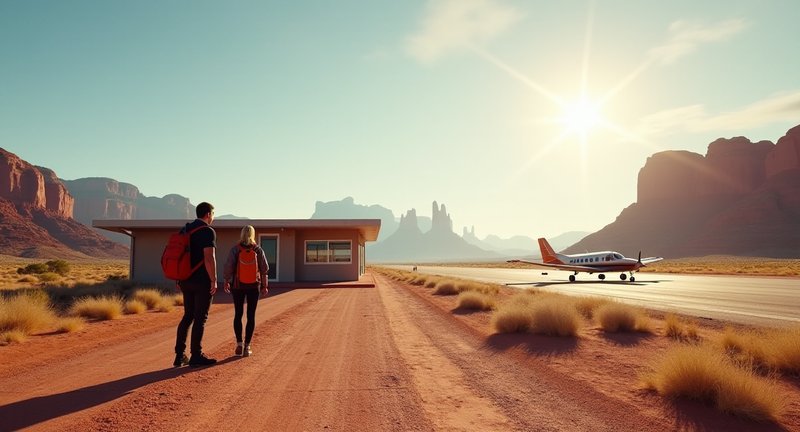
One of the best things about flying into a nearby city is the drive that follows. You’ll have a chance to soak up the open roads, the expansive desert, and those iconic red rocks that seem to rise out of nowhere. From my travels, here’s what you need to know about your flight options:
- Salt Lake City International Airport (SLC): This is the main hub if you’re coming from afar. It’s a solid 230 miles from Arches, but the drive down to Moab is a mini-adventure in itself, with views that shift from urban to desert.
- Grand Junction Regional Airport (GJT): Just 110 miles away, this airport in Colorado is smaller but quite handy if you want to minimize driving time. Plus, you get to cruise through some truly stunning parts of the desert.
- Canyonlands Field Airport (CNY): Now, if you’re looking for proximity, this tiny airport, just 18 miles from Arches, is your ticket. It’s small, but it drops you practically on the doorstep of Moab.
After you land, my advice? Take your time. Whether you’re on a scenic highway or a quiet desert road, the journey is as much a part of the adventure as the destination. And trust me, once you catch your first glimpse of those arches, you’ll be grateful for every mile you’ve covered.
Alternative Airports for Travel
When planning your next adventure, consider flying into alternative airports. I’ve often found these gems offer smoother travel experiences less crowded, more efficient, and sometimes even closer to unexpected hidden spots. These alternative airports might not be the major hubs everyone automatically books flights through, but they can offer surprising benefits for your trip.
Take Grand Junction Regional Airport, for instance. Sure, it’s a little further from some big-name attractions, but the ease of navigation through its smaller terminals often means a quicker exit and onto your adventure. You’ll also find regional airports in places like Durango, Colorado, or Provo, Utah, offering unique access points to stunning landscapes you might not have considered.
Here are some reasons why alternative airports could be your best option:
- Smaller crowds: Avoid the chaotic rush of large airports and enjoy more breathing room in smaller, regional spots.
- More scenic routes: Sometimes, these smaller airports land you closer to stunning landscapes and lesser-known national parks.
- Better connections: With many major carriers now serving regional airports, it’s easier than ever to connect through hubs that put you right in the heart of adventure.
A tip I learned from experience: Don’t just focus on the closest airport to your destination. Sometimes a flight into an airport 100 miles away offers scenic drives and access to lesser-known trails, allowing you to make the most of the journey itself.
So, next time you’re mapping out your trip, keep these alternative airports in mind they may just unlock the hidden adventure you’re seeking!
Best Times to Fly to Moab
When dealing with planning a trip to the breathtaking landscapes of Moab, timing your flight can be as crucial as packing your hiking boots. Having flown in and out of this adventure haven multiple times, I’ve learned a thing or two about the best times to embark on this journey.
Spring (March to May)
Ah, spring! The time when nature awakens, and so do our wanderlust-filled hearts. During this season, the weather is generally mild, with temperatures ranging from the mid-50s to the low 80s. Here are a few perks of flying during spring:
- Wildflower Blooms: The desert bursts into color, painting the landscape with wildflowers.
- Ideal Hiking Conditions: The moderate weather makes it perfect for exploring trails without the summer heat bearing down.
- Fewer Crowds: With kids still in school, you might find fewer tourists crowding the iconic sites.
Fall (September to November)
As summer fades into autumn, this season transforms the scenery into a palette of warm hues. Temperatures begin to cool, making it an excellent time to visit:
- Golden Hour Magic: The soft autumn light creates stunning photography opportunities.
- Harvest Season: Enjoy local produce and festivals, celebrating the bountiful harvest.
- Comfortable Weather: Temperatures often hover in the 60s to 70s, perfect for outdoor activities.
Summer (June to August)
While summer brings heat often soaring past 100degF it’s also the most popular time to visit. Just prepare for the sweltering temperatures and larger crowds. If you’re a sun-seeker:
- Long Days: More daylight means extended adventures.
- Event Season: Various festivals and events take place during these months, offering a taste of local culture.
Winter (December to February)
Though colder, winter has its charms. If you’re up for a unique experience, consider:
- Winter Wonderland: Snow-capped red rocks create a surreal landscape.
- Fewer Tourists: Enjoy a more tranquil Moab, away from the hustle and bustle.
- Holiday Spirit: Local events often embrace the festive season, making for a cozy atmosphere.
Also, choosing the best time to fly to Moab comes down to what you want from your adventure. Whether it’s the floral fragrance of spring or the calm of winter, each season offers its own unique flavor. Happy travels!
Tips for Booking Flights to the Region
As for booking flights to the stunning landscapes around Arches National Park, a bit of savvy planning can go a long way. I’ve learned through my own travels that there are a few golden nuggets of wisdom to keep in mind for securing the best deals and making your journey smoother.
1. Timing is Everything:
Book your flights well in advance, especially if you’re aiming for the peak seasons, like spring and fall when the weather is simply delightful. Aim for at least two to three months ahead to snag the best prices.
2. Flexible Dates:
If your schedule allows, consider flying mid-week. Tuesdays and Wednesdays often feature lower fares compared to the bustling weekends. Use fare comparison tools to see how prices fluctuate over the week.
3. Nearby Airports:
Look beyond the main hubs. While the area has its primary airport, don’t hesitate to check flights into other nearby airstrips. You might discover hidden gems of affordability with a scenic drive to your destination.
4. Alerts and Comparisons:
Set up flight alerts on various travel websites. This way, you’ll be notified of price drops without the hassle of constant checking. Also, compare prices on multiple platforms; sometimes, one site might have exclusive discounts.
5. Consider Package Deals:
Sometimes, bundling your flight with accommodations or rental cars can save you a pretty penny. It’s worth exploring those options if you’re looking to minimize your travel expenses.
By keeping these tips in mind, you’ll be well on your way to an unforgettable adventure in the breathtaking region surrounding Arches National Park. Safe travels!
Everything Explained
Where to fly into to visit Arches National Park?
The best airport to fly into for visiting Arches National Park is Canyonlands Field Airport (CNY), located just about 18 miles from Moab. This small airport offers limited commercial flights, primarily connecting to Denver. For more flight options, travelers can also consider flying into Grand Junction Regional Airport (GJT) in Colorado, approximately 120 miles away, or Salt Lake City International Airport (SLC) in Utah, which is about 230 miles from the park. Both airports provide access to rental cars, making it easy to reach the park and explore the stunning landscape.
What is the closest major airport to Moab, Utah?
The closest major airport to Moab, Utah, is Grand Junction Regional Airport (GJT), which is approximately 120 miles away. This airport offers a wider range of flights and airline options compared to the smaller Canyonlands Field Airport. Grand Junction serves as a gateway for travelers heading to Moab and the surrounding national parks. From the airport, visitors can rent a car or use shuttle services to reach Moab and Arches National Park, ensuring easy access to the area’s natural wonders.
How far apart are Zion and Arches National Parks?
Zion and Arches National Parks are roughly 300 miles apart, making for a scenic drive that can take around 5 to 6 hours depending on road conditions and stops along the way. The route typically includes a drive through southern Utah, showcasing breathtaking landscapes, rock formations, and small towns. Many visitors opt to explore both parks as part of a larger road trip through the region, allowing them to experience the unique beauty and geological features that each park has to offer.
What is the best month to visit Arches National Park?
The best months to visit Arches National Park are typically April, May, September, and October. During these months, the weather is generally mild, making outdoor activities like hiking and sightseeing more enjoyable. Summer can bring extremely high temperatures, often exceeding 100degF, while winter may present chilly conditions and occasional snowfall. By visiting in spring or fall, travelers can experience pleasant temperatures, fewer crowds, and vibrant wildflowers or stunning fall foliage in the park, enhancing the overall experience.
What is the closest major city to Arches National Park?
The closest major city to Arches National Park is Moab, Utah, located just a few miles from the park’s entrance. Moab is a vibrant hub for outdoor enthusiasts, offering a variety of accommodations, dining options, and recreational activities. The city’s proximity to both Arches and Canyonlands National Parks makes it an ideal base for exploring the stunning landscapes and unique geological features of the region. Visitors can enjoy a range of adventure activities, including hiking, mountain biking, and river rafting, while experiencing the local culture and hospitality.
How many days do you need to explore Arches National Park?
To fully explore Arches National Park, a stay of at least 2 to 3 days is recommended. This timeframe allows visitors to hike several trails, visit iconic landmarks such as Delicate Arch and Landscape Arch, and participate in ranger-led programs. Each day can be filled with different activities, including scenic drives, stargazing, and photography. For those wishing to take it slow and appreciate the beauty of the park, an extended stay can lead to a more enriching experience, with ample time to soak in the stunning landscapes and natural formations.
Is there a shuttle from Moab to Arches National Park?
Yes, during the peak season, there is a shuttle service available from Moab to Arches National Park. The service is designed to alleviate parking congestion within the park and provide convenient transportation for visitors. The shuttles typically run frequently, allowing guests to hop on and off at various trailheads and attractions throughout the park. It’s advisable to check the schedule and availability ahead of your visit, especially during busy times, to ensure a smooth and enjoyable experience while exploring Arches.
How far is Moab from the entrance to Arches National Park?
Moab is approximately 5 miles from the entrance to Arches National Park, making it a short drive that takes around 10 to 15 minutes. This close proximity makes Moab an ideal base for exploring the park, as visitors can easily return to the city for meals, accommodations, or supplies. The quick commute allows for flexibility in planning daily activities, ensuring that travelers can maximize their time enjoying the stunning landscapes and natural features that Arches has to offer.
Is Moab the same as Arches National Park?
No, Moab is not the same as Arches National Park; rather, it is a nearby city that serves as the gateway to the park. While Moab provides essential services such as lodging, dining, and recreation, Arches National Park is a protected area renowned for its stunning red rock formations and natural arches. The park covers over 76,000 acres and offers a variety of hiking trails, scenic drives, and breathtaking viewpoints. Visitors often use Moab as a convenient location to access Arches and experience the beauty of the surrounding landscape.
What is the closest airport to the Arch?
The closest airport to Arches National Park is Canyonlands Field Airport (CNY), located about 18 miles from the park’s entrance. This small airport offers limited flights and is primarily served by regional airlines. For travelers seeking more flight options, Grand Junction Regional Airport (GJT), approximately 120 miles away, is another good choice. Both airports provide access to rental cars, allowing visitors to easily reach Arches and explore the breathtaking scenery and unique geological features the park has to offer.
How far is Moab from the entrance to Arches National Park?
Moab is about 5 miles from the entrance to Arches National Park, which translates to a quick drive of approximately 10 to 15 minutes. This short distance allows visitors to easily access the park for a day of hiking, sightseeing, and exploring the numerous trails and attractions. Being so close to the park makes Moab a popular choice for travelers, as they can enjoy both the city’s amenities and the incredible natural beauty of Arches without spending much time commuting.
How far apart are Arches and Canyonlands?
Arches National Park and Canyonlands National Park are approximately 30 miles apart, making it feasible for visitors to explore both parks in a single day. The drive between the two typically takes around 30 to 40 minutes, allowing travelers to appreciate the stunning landscapes of southeastern Utah. Each park offers distinct geological features and outdoor experiences, from Arches’ famous rock formations to Canyonlands’ expansive canyons and vistas. Many visitors enjoy planning their itineraries to include both parks, enhancing their overall adventure in the area.




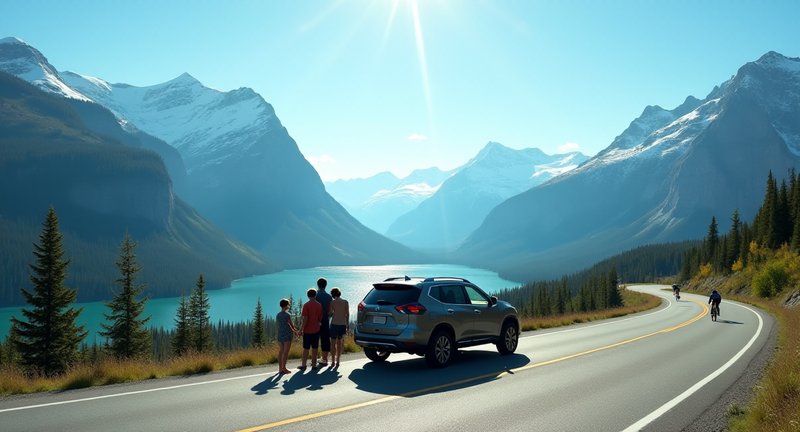
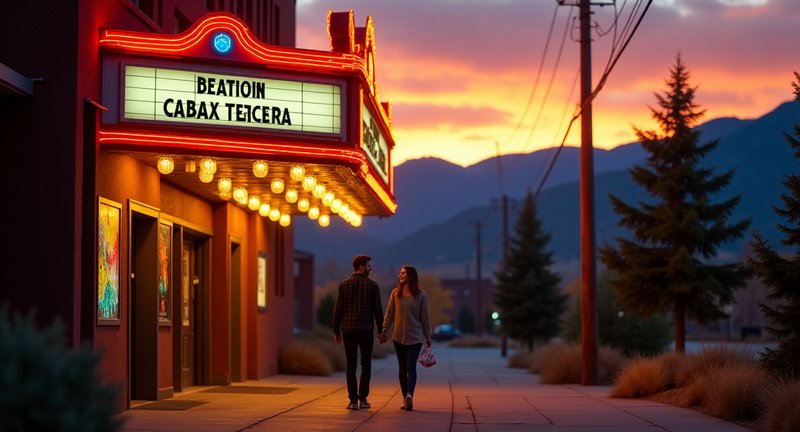
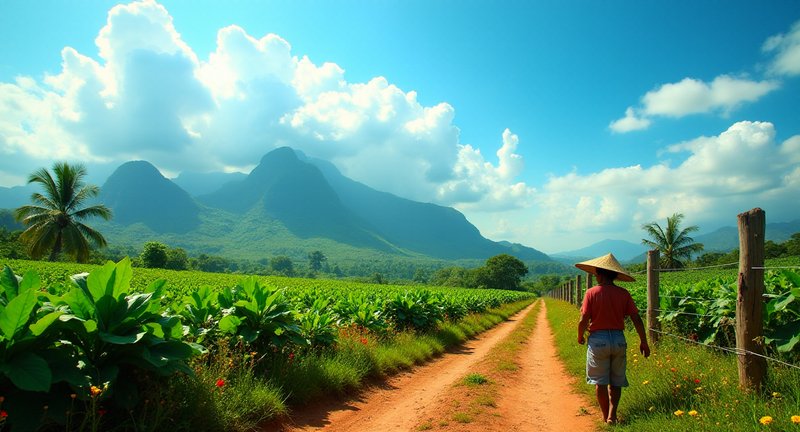

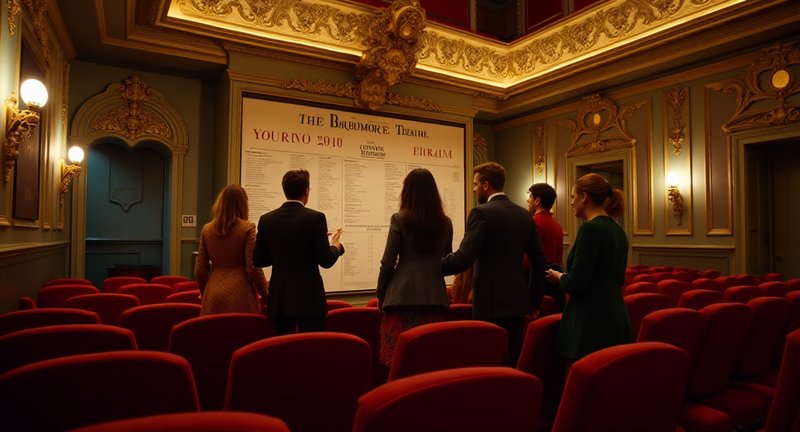


I love how you highlight the journey being just as important as the destination! Last time I flew into Salt Lake City, I actually took the long scenic route to Moab, and it was breathtaking. There’s something magical about watching the landscape change from city streets to wide-open desert and towering red rocks. It’s like a sneak preview of the adventure waiting at Arches. Definitely recommend people enjoy the drive, not just rush to the park!
This is such a helpful breakdown! I’ve taken shuttles to Arches before, and it’s definitely the way to go. The drivers always have the best tips on where to hike and when to catch the most stunning sunrise views. And I love that shuttle services are eco-friendly makes you feel like you’re giving back to nature while enjoying it!
I totally agree! Public transportation can be such a fun way to really get a feel for the local vibe. I once rented a bike in Amsterdam, and it was an unforgettable experience. I felt like I was one of the locals, weaving through the streets! It’s such a cool way to explore a new place.
Oh, I couldn’t agree more about the perks of renting a car at a small airport. There’s just something so satisfying about landing, grabbing your luggage, and immediately heading for your car. I had a great experience with this when I flew into a small airport in Colorado – the staff was super friendly, and they gave me a few off-the-beaten-path suggestions that made my trip! One of the best tips they gave me led me to this tiny, scenic overlook that wasn’t even on my map. Totally made my day! And I’m with you on booking ahead those extra fees can be brutal if you’re not careful. But yeah, having a car makes all the difference in exploring at your own pace, especially in places like Moab where there’s so much to see. Freedom on the road is everything!
This is great info for anyone planning a trip to Moab! I flew Delta into Salt Lake City last year, and it was a breeze. I love how you mentioned the smaller airlines like SkyWest and Allegiant I’ve flown SkyWest a few times, and it’s definitely more relaxed compared to the larger carriers. I also like that you pointed out the benefits of flying into a regional hub. Honestly, avoiding the craziness of a big airport is such a relief, and it makes the start of the trip feel way less stressful. It’s nice knowing that there are options depending on where you’re flying from, especially with airlines like Southwest if you’re up for a bit of a drive. Great breakdown here, and it’s making me want to plan another trip to Moab ASAP!
Ah, I totally agree with the breakdown of airport options for Moab! I’ve actually flown into Salt Lake City before and the drive to Moab is stunning. Honestly, it felt like the road trip was part of the vacation itself – endless desert views and those massive red rock formations that just take your breath away. I hadn’t considered flying into Grand Junction, but it seems like a solid option, especially if you’re short on time. I think I’d still prefer that long scenic drive from SLC, but it’s great to have choices depending on how much time you want to spend on the road. Canyonlands Field Airport sounds like a dream if you can manage to snag a flight there. It would be incredible to be hiking so quickly after landing! No matter what route you take, Moab is definitely worth the journey.
I love that you included Canyonlands Field as an option! I actually flew into Salt Lake City on my last trip, and while the road trip was beautiful, I wish I had known about Canyonlands being so close to Arches. The convenience factor is huge when you’re short on time but still want to soak in all the red rock magic. Plus, smaller airports are always so much more chill than the big ones. Definitely going regional next time!
Oh, I flew into Grand Junction Regional on my last trip to Utah, and you’re so right about the drive it was stunning! It was such a smooth and scenic journey, especially crossing into Utah. I debated flying into Salt Lake, but that four-hour drive felt like too much after a long flight. I totally agree about Canyonlands Field though next time, I’ll definitely try to fly in there. Landing that close to the park sounds like a dream!
I absolutely agree that Arches National Park feels like stepping onto another planet. I did the Delicate Arch hike last summer, and it was unreal. I love how you mentioned timing sunset was everything for me. Watching those arches change colors as the sun went down was breathtaking! And yes, the stars! I had no idea it was such a dark sky park until I got there. Totally magical. I’m already planning my next trip to try the Fiery Furnace!
This post just hit me right in the feels! The way you describe Arches is exactly how I felt the first time I visited. It’s like walking through a living, breathing painting. And yes, sunrise at Delicate Arch is an absolute must it’s one of those moments you’ll never forget. The wildlife there is something else too! I had a mule deer casually walk right past me once. It felt like the park itself was welcoming me. Oh, and stargazing! I stayed late one night, and let me tell you, I’ve never seen stars like that in my life. It was like being wrapped in the universe. You’re spot on Arches isn’t just a park, it’s an experience that stays with you long after you leave.
I’ve been to Arches a few times, and I have to say, each airport has its own perks depending on what you’re looking for. Salt Lake City offers a wider range of flights, which can be convenient if you’re flying from further away, but the drive from there really becomes part of the experience. The landscape shifts from cityscape to this rugged, untamed desert terrain that gets you in the perfect mindset for exploring Arches. That said, Canyonlands Field (CNY) is my personal favorite for its proximity to the park. It’s a no-brainer if you’re short on time or just can’t wait to jump right into the adventures! The only catch is the limited flights, but if you plan early, it’s totally worth it.
I totally agree with booking the rental car in advance! I remember flying into Canyonlands Field Airport a few years ago, and I almost didn’t get a car because everything was sold out. But that drive from the airport? Absolutely stunning like a preview of the beauty you’re about to witness at Arches!